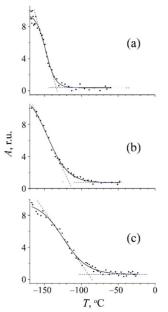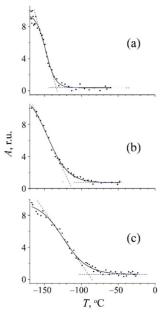Formation of a Dispersion-Hardened Structure in Hadfield Steel Under Friction. Part 2
IF 2
4区 材料科学
Q2 MATERIALS SCIENCE, CHARACTERIZATION & TESTING
引用次数: 0
Abstract
The gradient structure formed in the surface layers of Hadfield steel under dry sliding friction was studied using Mössbauer spectroscopy and electron microscopy. Structural-phase transitions are established in the contact stress zone on the steel surface. The 20-μm-thick surface layers reveal deformation-induced short-range ordering with an increased number of neighboring manganese and carbon atoms. Thinner (up to 1 μm) layers are composed of nanocrystalline carbides of the (Fe,Mn)3C type.


摩擦作用下哈德菲尔钢弥散硬化组织的形成。第2部分
利用Mössbauer能谱和电子显微镜研究了干滑动摩擦作用下哈德菲尔德钢表层形成的梯度结构。钢表面的接触应力区形成了结构相变。20 μm厚的表面层随着相邻锰原子和碳原子数量的增加而呈现出变形诱导的短程有序。较薄(1 μm)层由(Fe,Mn)3C型纳米碳化物组成。
本文章由计算机程序翻译,如有差异,请以英文原文为准。
求助全文
约1分钟内获得全文
求助全文
来源期刊

Physical Mesomechanics
Materials Science-General Materials Science
CiteScore
3.50
自引率
18.80%
发文量
48
期刊介绍:
The journal provides an international medium for the publication of theoretical and experimental studies and reviews related in the physical mesomechanics and also solid-state physics, mechanics, materials science, geodynamics, non-destructive testing and in a large number of other fields where the physical mesomechanics may be used extensively. Papers dealing with the processing, characterization, structure and physical properties and computational aspects of the mesomechanics of heterogeneous media, fracture mesomechanics, physical mesomechanics of materials, mesomechanics applications for geodynamics and tectonics, mesomechanics of smart materials and materials for electronics, non-destructive testing are viewed as suitable for publication.
 求助内容:
求助内容: 应助结果提醒方式:
应助结果提醒方式:


